#Chinese Exclusion Act
Text




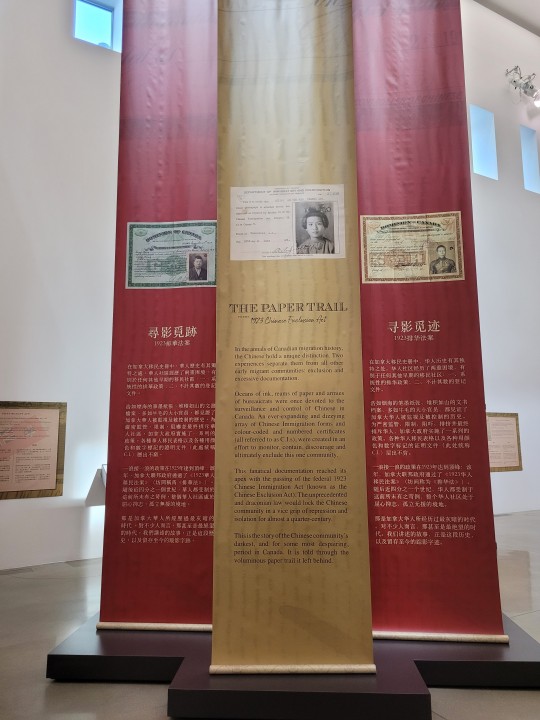
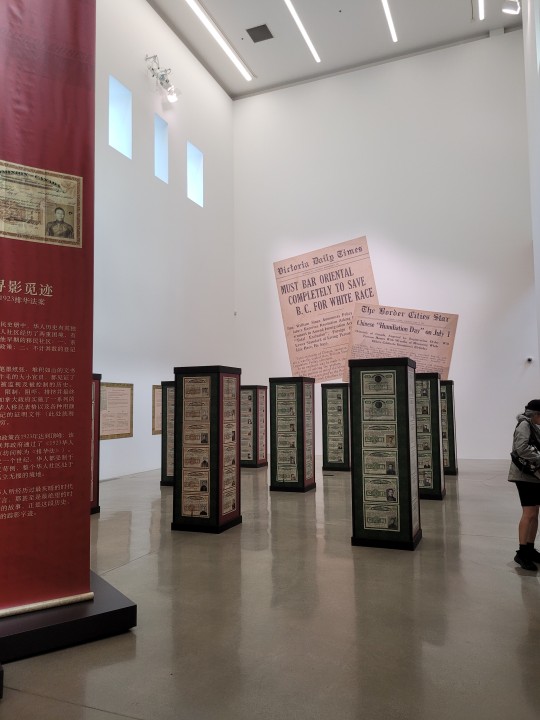
I went to the Chinese Canadian Museum in Vancouver today! It was informative, gut-wrenching, and SO WELL DONE. This might be the most well put together museum I have ever been to, and you BET I am going to be doing a video about it!
#this friday if i am feeling REALLY productive but more likely the friday after#museum#history#canadian history#chinese canadian museum#chinese exclusion act#chinese head tax
38 notes
·
View notes
Text
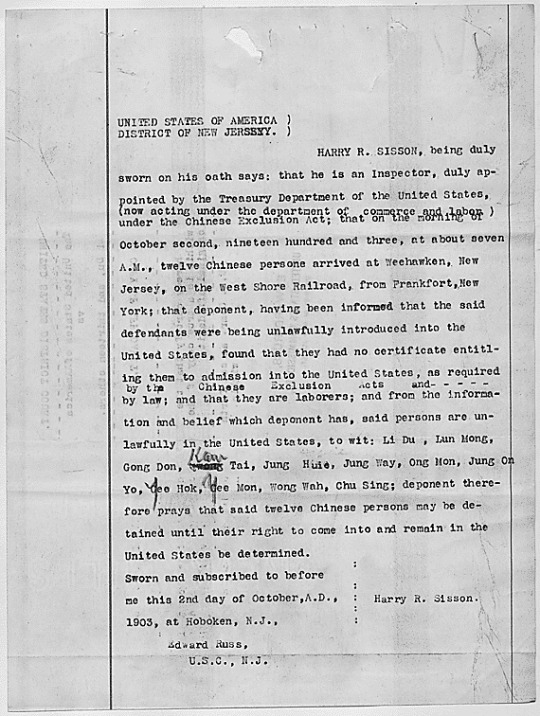

Affidavit presented by a Chinese Inspector to the U.S. Circuit Court in New Jersey requesting that twelve Chinese men, arrested in Weehawken, New Jersey, be detained.
Record Group 85: Records of the Immigration and Naturalization ServiceSeries: Chinese Exclusion Act Case FilesFile Unit: Case File 19/1490: File for twelve Chinese men
This document is filed with the Chinese Exclusion Act smuggling case file involving twelve Chinese men.
UNITED STATES OF AMERICA ) DISTRICT OF NEW JERSEY. ) HARRY R. SISSON, being duly sworn on his oath says: that he is an inspector, duly ap- pointed by the Treasury Department of the United States, (now acting under the department of commerce and labor) [appears to be typed in post writing] under the Chinese Exclusion Act; that on the morning of October second, nineteen hundred and three, at about seven A.M., twelve Chinese persons arrived at Weehawken, New Jersey, on the West Shore Railroad, from Frankfort, New York; that deponent, having been informed that she said defendants were being unlawfully introduced into the United States, found that they had no certificate entitl- ing them to admission into the United States, as required by the Chinese Exclusion Acts and - - - - - by law; and that they are laborers; and from the informal- tion and belief which deponent has, said persons are un- lawfully in the United States, to wit: Li Du, Lun Mong, Gong Don, Kan Tai [Kan is handwritten over typed name], Jung Huio, Jung Way, Ong Non, Jung on Yo, Yeo Hok [y is handwritten over typo], Yee Mon [y is handwritten over typo], Wong Wah, Chu Sing; deponent there- fore prays that said twelve Chinese persons may be de- gained until their right to come into and remain in the United States be determined. Sworn and subscribed to before me this 2nd day of October, A.D., Harry R. Sisson. 1903, at Hoboken, N. J., Edward Russ, U. S. C., N. J.
UNITED STATES DISTRICT COURT. The United States of America vs Li Du and thirteen others. COPY OF AFFIDAVIT. I hereby certify that the within is a true copy of the original affidavit. U. S. Comr. as set forth within. [typed] EDWARD RUSS UNITED STATES COMMISSIONER DISTRICT OF NEW JERSEY [stamped]
14 notes
·
View notes
Text
youtube
Family uncovers secrets their immigrant parents kept, October 25, 2023
On the 100th anniversary of the Chinese Exclusion Act, one of Canada’s most discriminatory immigration policies, siblings reunited in Regina, where they grew up, to learn more about their parents’ immigration to Canada — and ended up unearthing some long-buried secrets.
CBC News
#chinese exclusion act#discrimination#Chinese#diaspora#Canada#immigration#CBC#news#Chinese head tax#intergenerational trauma#Chinese Immigration Act#20th century
4 notes
·
View notes
Text
“Especially endearing to me is how this descendent recites the poem—not in the rhythmic chanting of a scholar but as a song the six-year-old heard in wonderment and committed to memory with delight."
4 notes
·
View notes
Text

“My hope is that this book brings the United States’ history of anti-Chinese violence out of scholarship and research and into our collective memory.” - Author’s Note
– Jenny Tinghui Zhang, Four Treasures of the Sky
#book quote of the day#jenny tinghui zhang#four treasures of the sky#Chinese American author#historical fiction#calligraphy#daiyu#Chinese Exclusion Act#1800s#booktok
2 notes
·
View notes
Photo

A sample of weaponry seized in New York Chinatown during the conflict between Hip Sing and On Leong Tongs, c. 1922. Photographer unknown (from the collection of the NYPD).
Disarming Chinese America: The Exclusionary Politics of Gun Control
“The gun is mythic in the American imagination… . The gun in America is unique because it has defined, and will continue to define, membership and belonging in the polity.” – Prof. Pratheepan Gulaesekaram
The widespread use of guns in Chinese Americans communities has been lost to historical memory, and almost a half-century has passed since San Francisco Chinatown’s last mass shooting. However, in the wake of a flood of news stories about the victimization by Chinese in California and elsewhere in the US – whether by hate or criminal predators – Chinese Americans have begun asking why relatively few in their communities bear arms for the protection of persons and property. Although the acquisition of personal firearms by Asian Americans has increased, particularly in this decade of Asian hate and criminal victimization, popular consciousness generally does not associate Chinese American communities with heavy firearms usage.
Ironically, the lack of firearms in California’s Chinese communities can be traced to century-old legislation aimed at directly suppressing the Chinese community’s ownership of guns and, in a larger sense, the deepening the notion of exclusion and, specifically, Chinese exclusion, from the right to bear firearms in America.
California’s Gun Law of 1923 contained two major provisions: (1) the requirement of a permit to carry a concealed handgun anywhere in California (and that statute is the direct ancestor of California’s current concealed weapon permit law); and (2) the prohibition of non-citizens from possessing concealable firearms. The handgun ban by non-citizens was upheld by the California Supreme Court in the case In re Ramirez (1924) 193 C. 633.
A July 15, 1923, a San Francisco Chronicle article supported the racial dimension of the legislative intent, and at whom the legislation was directed:

As the Chronicle reported, then-Governor Richardson had approved of the Gun Law largely on the recommendation of R. T. McKissick, president of the Sacramento Rifle and Revolver Club. Although McKissick acknowledged that banning resident aliens from owning handguns might pose a constitutional problem, McKissick indicated that ”it would have a ‘salutary effect in checking tong wars among the Chinese and vendettas among our people who are of Latin descent.’”
By invoking the specter of tong violence, the proponents of the law had invoked seven decades’ worth of fears by the white population of armed Chinese in California and throughout the American West.
The field of historical archaeology may lead to the revision of the stereotypical view of early Chinese communities as meek and victims, usually of white racist violence. The stereotype, however, has always been undermined by contemporary accounts of violent gunplay by Chinese in the gold fields and other frontier towns. Continuing excavations of old Chinese settlements by the Southern Oregon University have uncovered firearms and related accoutrements and provided evidence of Chinese use of guns to defend themselves.
However, the relatively small, legal firearms culture in the Chinese community can be attributed to the ascendancy and use by the “hatchet boys” or 斧頭仔 (canto: “fu tau jai”) of pistols, among other concealable weaponry, for advancing tong interests and conflict resolution.

“Highbinders’ Retreat” undated photo taken in San Francisco. Photographer unknown (from the Cooper Chow collection at the Chinese Historical Society of America).
The early gun control laws in California reflected the white community’s desire for safety from, and control over, the use of lethal force by nonwhites in their midst on the urban frontier. San Francisco enacted a gun control measure as early as 1847 to reduce violence. Coincident with the rise of anti-Chinese sentiment, the city singled out the Chinese as a focal point of violence for the balance of the 19th century and the first two decades of the 20th century, particularly Chinatown’s fighting tongs.

“The Yellow Terror In All His Glory” (1899) depicted an anti-colonial Qing Dynasty Chinese man standing over a fallen white woman, who represents the Western world. The cartoon made explicit the white community’s fears of innocent white women killed by gunplay in the Chinese community.
In 1879, California first enacted legislation to prohibit non-citizens from bearing arms. The law was fueled in major part by white perceptions of the Chinese as violent and unassimilable and thousands of lurid newspaper reports about tong violence.
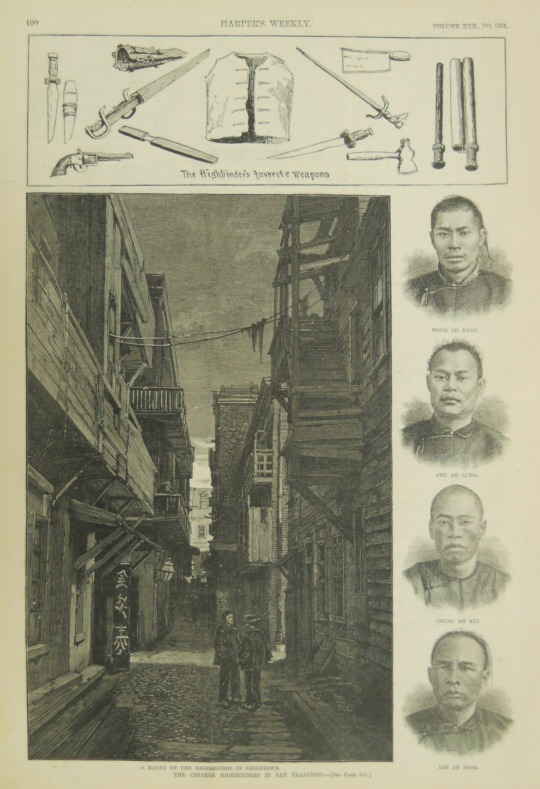
“The Highbinders’ Favorite Weapons,” Harper’s Weekly of February 13, 1886 (Vo. XXX, No. 1521) from the collection of the Bancroft Library.
For example, the Daily Alta California published on January 18, 1887, an article titled: “A Bold Highbinder,” which detailed the removal of a girl from a “Chinese den” and her attempted recapture. One of the Chinese men attempting to take the child “slipped and fell on the pavement, at the same time drawing a revolver.” The man, Wong Bing Lin, was arrested and charged with carrying a concealed weapon. When searched, the police found a knife. “He also wore a coat of mail made out of compressed paper pulp, which could turn a bullet.”
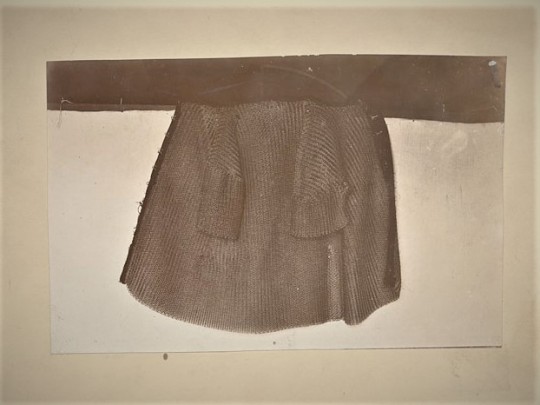
Coat of chainmail used by highbinders. Photographer unknown (from the collection of the Bancroft Library)
Increased gun violence by tong soldiers induced the city of San Francisco to enact local legislation to ban concealed weapons in 1890. As reported by the Daily Alta on February 5, 1890, Chief of Police Patrick Crowley recommended that shooting galleries be removed, “in the Chinese quarter, where nearly every Chinaman is the owner of a pistol and is handy in its use.”

San Francisco police photo of weapons seized from Chinese “highbinders” c. 1900. Photographer unknown.
Violence by Chinese began to slacken, particularly in the aftermath of the federal Chinese Exclusion Act of 1882, its extension by the Geary Act of 1892, and the disruption of the 1906 earthquake and fire. Chinese rarely committed homicides against non-Chinese, as the violence usually occurred between Chinese by competing organized criminal organizations.

News account of a homicide allegedly committed by Hop Sing tong gunmen against a Chinese carpenter (and reputed Suey Sing tong member) located at 28-1/2 Waverly Place as reported in the The Call of Monday, January 7, 1900.
With the decreased perceived threat from Chinatown, the discourse shifted to include firearms themselves and the ease in which they could be acquired. However, in 1912, San Francisco saw a string a murders of young white women, killed by young men with easy access to firearms.

“Peace Meeting in Chinatown, San Francisco, Feb. 1921, bet. the Hip Sings and Ping Koongs”. Photographer unknown (from the Jesse B. Cook collection of the Bancroft Library). The photo shows police officials mediating treaty talks between the warring Hip Sing (協勝堂) and Bing Kung (秉公堂) tongs.
Although San Francisco police and merchant associations repeatedly mediated “peace treaties,” between fighting tongs, the ceasefires inevitably broke down.


The San Francisco Call, March 13, 1913, reports on gunplay as part of a statewide conflict between the Suey Sing (萃勝堂) and Bing Kung tongs. The Suey Sing Tong traced its establishment to San Francisco in 1867 when merchants formed a fighting arm to protect their property interests.
Homicide rates in the Chinese community began to spike in the second decade of the 20th century.

Chinese and white homicide rates compared (1860-1930). Chart by historian and Deputy Chief Kevin Mullen (ret.).
“Race continued to play a role in the discourse of gun control in California, as judicious men worked to disarm non-whites they viewed as threatening,” according to Josselyn Green (a.k.a. Huerta) in her monograph “ Control of Violence, Control of Fear: The Progression of Gun Control in San Francisco, 1847-1923″ (Spring 2015 Master’s thesis). “In 1923, the California State Legislature passed a second gun control bill … Most notably the new statutes stated, ‘no unnaturalized foreign born person … shall own or have in his possession or under his custody or control any pistol, firearm capable of being concealed on the person.’ Because the Chinese Exclusion Act had been extended permanently in 1902, thus denying Chinese Americans citizenship. California’s 1923 gun control law effectively disarmed the entire Chinese community.“
The denial of the Chinese community’s access to concealable firearms would remain in effect for a half-century until it was declared unconstitutional by a California Court of Appeals in People v. Rappard (1972).
As for the wider conflict between the criminal tongs, conditions began to change during the 1920′s. Crime historian Paul Drexler wrote as follows:
“The overthrow of the Manchu dynasty reduced the flow of tong members from China. As a result, Chinatown was becoming a more middle-class area. Community leaders realized they could make more money from legitimate commerce than from vice and became more supportive of The City’s government. Additionally, the Chinatown Squad, under the leadership of Sgt. Jack Manion, changed tactics and used community policing to win the trust of the Chinatown population.”

This same image from The Call newspaper would be reproduced for the cover by a FBI intelligence report during the 1970′s. The gun had not only shaped California gun control legislation but its use by organized crime forever shaped US society’s perceptions and stereotypes of the entire Chinese community into the modern era.
If the way of the gun represents a badge of a community's membership, and even its rights, in American society, then the denial of the Chinese American community's access to firearms a century ago was emblematic of its exclusion. Law professor Pratheepan Gulaesekaram has written about the gun as a badge of membership in the American polity as follows:
“Access to, and use of, firearms has helped define ideas of membership in America. The gun played a vital role in the genesis tales of the Republic itself. It was a bullet fired into a British officer by a militia man in Lexington, Massachusetts on April 19, 1775, that is credited with igniting the war for independence; it was the gun that helped tame the wilderness and battle American Indians in stories of the expanding nineteenth-century frontier; and firearms were credited with shoring up the struggle for political and racial equality during Reconstruction after the Civil War. In all of these manifestations—as a tool of resistance to tyranny, an instrument of imperialism, a method of survival and self-protection, and a pathway to political inclusion—the gun facilitated formation of, and inclusion in, the American polity.
“Concomitantly, however, the gun has also demarcated the borders of exclusion as well. …”
(Gulaesekaram, P., “Guns and Membership in the American Polity,” William & Mary Bill of Rights Journal, vol. 21 (December 2012).
San Francisco Chinatown would not see a return to pervasive gunplay by any segment of its community until the 1970’s, but that is a story for another day.
[updated 2023-5-20]
#Gun ownership by Chinese Americans#California Gun Law of 1923#tongs#Hip Sing Tong#Bin Kung Tong#On Leong Tong#highbinders#Chinese Exclusion Act#Disarming Chinatown#anti-Asian hate and firearms acquisition#Suey Sing Tong#Hop Sing Tong
5 notes
·
View notes
Text

100 Years after the Exclusion Act, Chinese Canadians Like Me Still Question Their Belonging
Searching for the sense of identity I had lost during the pandemic, I needed my family to see where our Canadian story began
For some time, my parents had expressed a desire to fly to Vancouver to visit friends and relatives they hadn’t seen in years. Let’s go too and take the kids, I suggested to Elizabeth. We’d go to Victoria as well. We’d take them to the oldest Chinatown in Canada. We’d take our kids to the school my dad went to. I wanted a photo of my parents standing with us and our kids in the place where, in a way, it all started for our family—a chapter of our story coming full circle.
Read more at thewalrus.ca.
Illustration by Phoebe Xiao (phoebexiao.com)
0 notes
Text
1882 - The U.S.Congress passes the Chinese Exclusion Act


*An 1886 advertisement for "Magic Washer" detergent: The Chinese Must Go.
*"A Statue for Our Harbor," a political cartoon published in 1881.
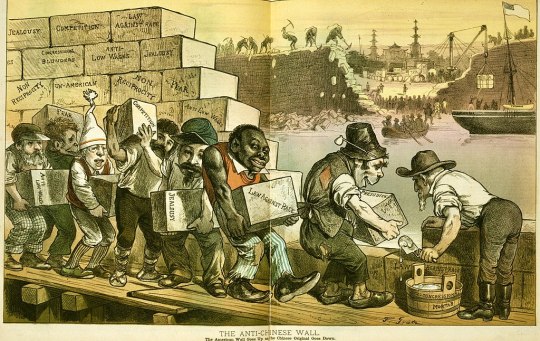
*Anti-Chinese Wall cartoon in Puck
1 note
·
View note
Text
Chinese Opium-Smokers in the late XIX Century in the US
New Post has been published on https://china-underground.com/2011/06/10/chinese-opium-smokers-in-the-late-xix-century-in-us/
Chinese Opium-Smokers in the late XIX Century in the US

Chinese Opium-Smokers
In the nineteenth century, thousands of Chinese people crossed the ocean to find work in the United States.
They began arriving in San Francisco in 1849. Many found work as laborers, while a small number worked in the opium trade.
San Francisco’s Chinatown became the site of numerous opium dens.
With the post-Civil War economy in decline, anti-Chinese animosity became politicized and the Chinese were blamed for depressed wage levels.
The Chinese Exclusion Act (1882) was a federal law proposed by Republican Congressman Horace F. Page and signed by Republican President Chester Allen Arthur on May 6, 1882, prohibiting all immigration of Chinese laborers.
The Chinese Exclusion Act was built on the earlier Page Act of 1875, which was the first restrictive federal immigration law in the United States prohibiting the entry of Chinese women. The ban was heavily enforced and it was a barrier for all East Asian women trying to immigrate, especially Chinese women. For this reason, early Chinatowns were largely bachelor societies.
Opium was used among the Chinese, but because of the urgent need to save money to send home, most of the newcomers took narcotics only on Sundays and other nonworking times. The tongs, the Chinese triad, supplied drugs to the local community. Opium-eradication campaigns drove opium smoking underground, but it was still fairly common in North America until around World War II.
The Chinese Exclusion Act was repealed by the 1943 Magnuson Act when China had become an ally of the U.S. against Japan in World War II.
Related articles: History of the Chinese Diaspora in America
Images
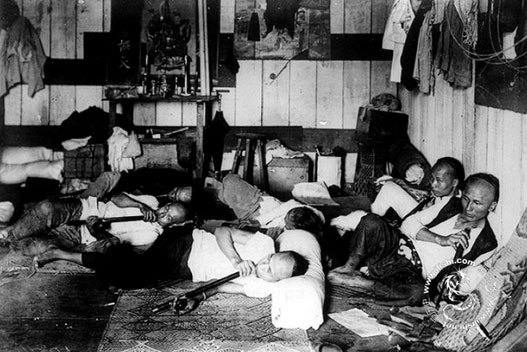


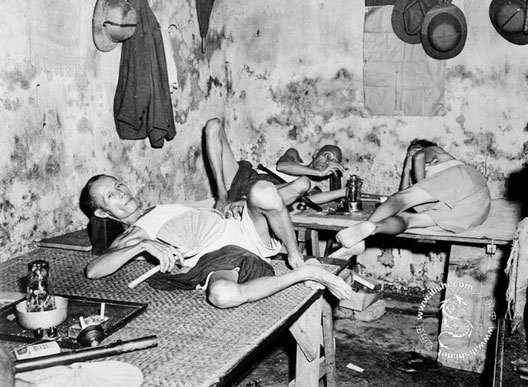
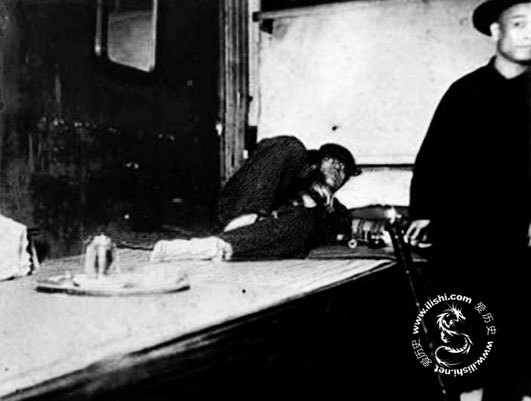





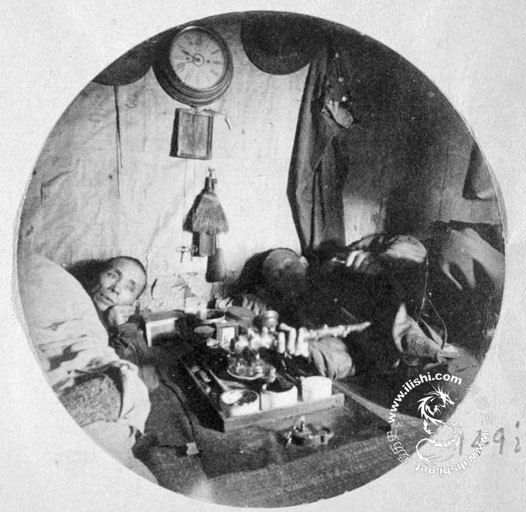


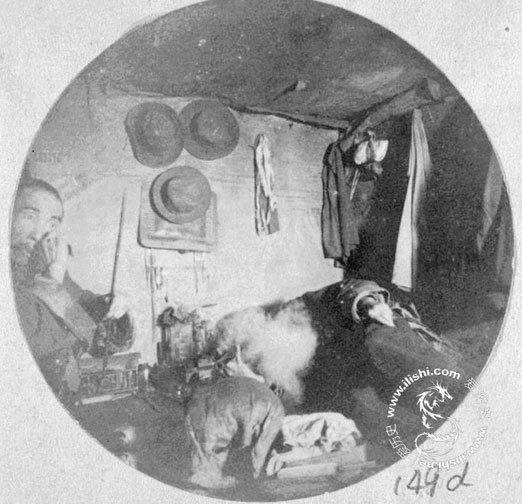


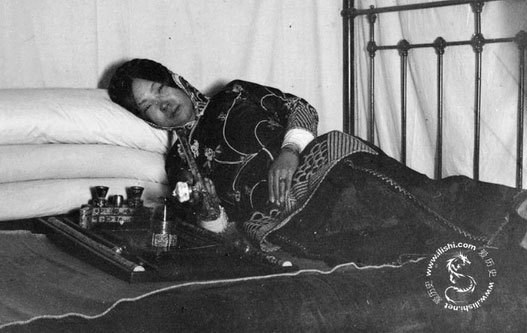



Source , wikipedia
Topic: Chinese Opium-Smokers images, opium-smockers old photographs
#ChineseDiaspora, #ChineseExclusionAct, #MigrantWorkers, #OldImages, #Opium, #OpiumInChina, #OpiumSmokers, #US
#Chinese Diaspora#Chinese Exclusion Act#migrant workers#old images#opium#opium in china#Opium-Smokers#US
0 notes
Note
Hello ! As a Chinese highschooler who is currently striving to study in the US and become " The Funkiest International Student ™ " I really loved Adamandi , and it gave me a lot of food for thought . I wanted to ask if the comparison between Vincent and the virus was supposed to be related to Covid-19 and anti-Asian xenophobia ? Thank you so much !
Thank you!! Honestly it more stemmed from looking for setting-appropriate 1930s biology papers that would make for apt metaphors and stumbling onto this one hehe — based more on the concept of the system around something making it the thing that ends up destroying said system. The specific COVID anti-Asian sentiment timeliness ended up crossing my mind a bit later in the process of song creation, so while not directly purposeful, I’m glad that’s also something that reads!
#adamandi musical#Vincent Aurelius Lin#adamandi#Vincent Lin#I did think about the Chinese exclusion act a lot — there is a version of Adamandi where more of that made its way into the plot#but that was part of what informed student body#so by extension while not COVID specific it is about anti Asian xenophobia!
32 notes
·
View notes
Photo
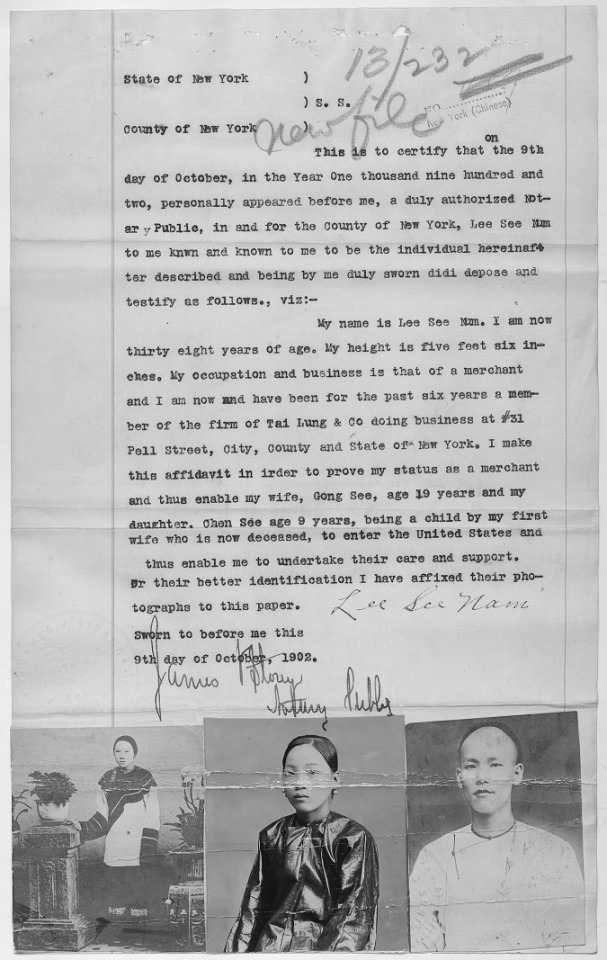
“I make this affidavit in [order] to prove my status as a merchant and thus enable my wife, Gong See, age 19 years and my daughter, Chen See age 9 years, being a child by my first wife who is now deceased, to enter the United States . . . .” 10/9/1902.
File Unit: Case File 12/232: Gong See and Chen See, 10/9/1902 - 8/16/1940
Series: Chinese Exclusion Act Case Files, ca. 1882 - ca. 1960
Record Group 85: Records of the Immigration and Naturalization Service, 1787 - 2004
Transcription:
State of New York )
) S. S.
[stamped] NO [number struck through]
County of New York ) [New York (Chinese) [/stamped]
[handwritten in pencil in upper part of document] 13/232 New file [/handwritten]
This is to certify that on the 9th day of October, in the Year One thousand nine hundred and two, personally appeared before me, a duly authorized Notary Public, in and for the County of New York, Lee See Nam to me known and known to me to be the individual hereinafter described and being by me duly sworn didi depose and testify as follows., viz:-
My name is Lee See Nam. I am now thirty eight years of age. My height is five feet six inches. My occupation and business is that of a merchant and I am now and have been for the past six years a member of the firm of Tai Lung & Co doing business at #31 Pell Street, City, County and State of New York. I make this affidavit in irder [sic] to prove my status as a merchant and thus enable my wife, Gong See, age 19 years and my daughter, Chen See age 9 years, being a child by my first wife who is now deceased, to enter the United States and thus enable me to undertake their care and support. For their better identification I have affixed their photographs to this paper. [handwritten] Lee See Nam [/handwritten]
Sworn to before me this
9th day of October, 1902.
[handwritten] James [illegible initial] Story [/handwritten]
[handwritten] Notary Public [/handwritten]
[At bottom of page are individual photos of Lee See Nam, Gong See, and Chen See.]
#archivesgov#October 9#1902#1900s#Chinese Exclusion Act#Chinese American history#Asian American history#immigration
51 notes
·
View notes
Video
youtube
The Three Major Waves of Korean Immigration Explained, May 8, 2023
Korean culture has long been a part of the fabric of American culture. But what was that journey like? The three most significant waves all happened in relation to geopolitical tensions and trends in both America and Korea. Dolly Li dives deeper. Stream Free Chol Soo Lee now on YouTube or the PBS App.
PBS Origins
#immigration#Korean#American#USA#history#diaspora#20th century#21st century#19th century#racism#discrimination#Free Chol Soo Lee#PBS#war#Korean War#Hawaii#politics#Chinese Exclusion Act#labour#economics#colonialism#exploitation#Immigration Act of 1924#Cold War#War Brides Act#Immigration and Nationality Act of 1965#hate crimes
2 notes
·
View notes
Text
okay i was doing some math because im obsessed with numbers and knowing things. Anyway in 2006 when agents of atlas v1 came out Derek sees Jimmy deaged and says that he should be sixty- then he's cut off so the oldest he could be is like 69 so if we used that he'd be born in 1937 which would make him 21 in 1958 when the agents of atlas first formed which means Jimmy is at most 22 in 1959 making him 22 when he gets deaged in the modern era. now because of the sliding time scale since 2006 it's been about 5 years (using amadeus as reference because he's my blorbo who was introduced in 2005 at 15/16 and he is now 20) Jimmy around 27 tho he could be younger potentially
#jimmy woo#tbh jimmy being born around 1937 would work too because that's when ww2 starts in china which would be extra reason#for his family to want to move to the us tho i also dont really get how theyd get in because it was during the chinese exclusion act#but ig there needs to be some suspension of disbelief for any of this to work
11 notes
·
View notes
Text
[AL: Canada Day coming up. A nice refresher on why we should despise John A. MacDonald, despite nobody these days needing such a reminder.]
“Racisms are central to the creation of Canada through European dominance over the vast territories of the First Nations, Inuit and Métis people. A case in point is provided by John Alexander Macdonald and his enactment of Asian exclusion and the genocide of the people of the southern plains.[1]
Macdonald not only excluded the Chinese, he personally introduced biological racism as a defining characteristic of Canadianness. Biological racisms depart from older racisms by constructing allegedly natural, immutable and inescapable racial categories on the basis of supposed biological differences. Previous racisms had been based on alleged cultural characteristics that could change over time.[2] Macdonald’s fixing of difference was neither accidental nor simply the result of mere prejudice.
While debating the 1885 Electoral Franchise Act in the House of Commons, legislation he later called “my greatest triumph”,[3] Macdonald proposed that “Chinamen” should not have the right to vote on the grounds that they were “foreigners” and that “the Chinese has no British instincts or British feelings or aspirations.”[4] When a member of the opposition asked whether naturalized Chinese ceased to be “Chinamen”, Macdonald amended his legislation to exclude “a person of Mongolian or Chinese race.”[5] The opposition object that the Chinese were “industrious people” who had “voted in the last election,” or had “as good a right [to] be allowed to vote as any other British subject of foreign extraction.”[6] This led Macdonald to make clear that Chinese exclusion was necessary to ensure European dominance. He warned, “if [the Chinese] came in great numbers and settled on the Pacific coast they might control the vote of that whole Province, and they would send Chinese representative to sit here, who would represent Chinese eccentricities, Chinese immorality, Asiatic principles altogether opposite to our wishes; and, in the even balance of parties, they might enforce those Asiatic principles, those immoralities . . . , the eccentricities which are abhorrent to the Aryan race and Aryan principles, on this House.” He then claimed that the Chinese and Europeans were separate species: “the Aryan races will not wholesomely amalgamate with the Africans or the Asiatics” and that “the cross of those races, like the cross of the dog and the fox, is not successful; it cannot be, and never will be.” Chinese exclusion was necessary or, as he told the House, “the Aryan character of the future of British America should be destroyed . . .”[7]
Macdonald’s comments shocked his contemporaries in Parliament. He was the only member of the Canadian Parliament to use the term “Aryan” during the 1870s and 1880s, as well as the only member to argue that Asians and Europeans were separate species. The previous Canadian premier, Alexander Mackenzie, had even rejected calls for restrictive legislation on the Chinese as unseemly for “a British community,”[8] and had told the House, “To avow the principle that some classes of the human family were not fit to be residents of this Dominion would be dangerous and contrary to the law of nations and the policy which controlled Canada.”[9] When The Franchise Act reached the upper house, Senators, including some of Macdonald’s own appointments, debated whether they could get away with sending the legislation back to the House of Commons because of the invidious distinctions it enacted.[10]
Macdonald’s comments came as the final subjugation of the people of the southern plains was being completed through military force. The subjugation of Aboriginal peoples was also a project of racialization and exclusion. Macdonald personally created the system of control over so-called status Indians that survives to this day through the federal regime of Indian Affairs. In 1858, as Attorney General for Canada West, he introduced the Gradual Civilization of Indians Act. Macdonald reenacted similar legislation in the first federal Indian Act of 1869, this time adding a blood quantum rule, i.e., one that removed Indian status from anyone who has only one quarter “Indian” by blood, and also requiring that women who married non-Indian men lose their Indian status. This rule directly challenged the matrilineal systems of many First Nations. It also removed the right of First Nations communities to determine who their people were, while also allowing the government to replace traditional chiefs at the will.[11]
During the early 1880s, knowing of the dependence of the plains people on the Buffalo, whose migration had ended in 1879, Macdonald used a policy of deliberate starvation to force chiefs such as Big Bear to take treaty, while also imposing bureaucratic surveillance and control over the lives of treaty peoples through the Indian Act. In 1885, he completed the conquest of the plains through military force again the Métis and Plains Cree (remember that most of the military action was conducted by Colonel Otter again the plains Crees) and following the surrender of the plains peoples engaged in extra legal acts to ensure that those involved in the resistance would never challenge state control again. Macdonald declared twenty-seven bands to be in insurrection even though he knew that few First Nations were involved in the resistance. Innocent chiefs were arrested and imprisoned, while Aboriginal murderers were publicly executed at Battleford in contravention of the law of the time. The now conquered people were forcibly confined on reserves and were subject to an extralegal system of pass laws which prohibited them from leaving without a written pass from the Indian Agent. He then denied rations to the people trapped on reserve, resulting in a government-organized famine. As James Dascuk shows in his recent award-winning book, Clearing the Plains, these were deliberate acts of genocide organized by Macdonald so as to empty the plains to make them available for European resettlement.[12] Finally, as Superintendent General of Indian Affairs, Macdonald was even responsible for establishing the system of Indian Industrial Schools (i.e. residential schools) that were designed to disrupt the transmission of traditional culture while imbuing the supposed habits of European civilization in the rising generation.
Far from being the architect of peaceful progress, Macdonald pioneered some of the most ruthless practices of European colonialism and possibly the largest landgrab in the history of British colonialism. Macdonald worked to ensure European dominance by keeping out of the country the only other group that might threaten it: Chinese land-owners in British Columbia who as he warned would otherwise have the vote and might threaten control of the House of Commons. Thus Macdonald’s Aryan vision shaped his efforts to create a white supremacist state system, one predicated on the monopoly of racialized Europeans over state power, policies that came at the costs of the lives of the people of the plains and that brought generations of suffering to racialized Asians. These actions might be something worth reflecting upon in a multicultural Canada as we enter a period of celebrating the life of this man.”
- Timothy J. Stanley, “John A. Macdonald’s Aryan Canada: Aboriginal Genocide and Chinese Exclusion.” Activehistory.ca. January 7, 2015.
[1] See Timothy J. Stanley, Confronting White Supremacy: School Segregation, Anti-racism and the Making of Chinese Canadians (Vancouver: UBC Press, 2011) and “The Aryan character of the future of British North America”: John A. Macdonald, Chinese Exclusion and the Invention of Canadian White Supremacy,”in Patrice Dutil and Roger Hall (eds.), Macdonald at 200: New Reflections and Legacies (Toronto: Dundurn Press, 2014), 92-110.
[2] Edward Beasley, The Victorian Reinvention of Race: New Racisms and the Problem of Grouping in the Human Sciences (New York: Routledge, 2010).
[3] Gordon Stewart, “John A. Macdonald’s Greatest Triumph,” Canadian Historical Review 63 (1982), 3-33.
[4] Canada, House of Commons, Official Report of the Debates of the House of Commons of the Dominion of Canada (Ottawa: Maclean, Roger & co, 1885) (Henceforth, Commons Debates), 18, May 4, 1885, 1582.
[5] Ibid.
[6] Ibid., 1585.
[7] Ibid., 1588.
[8] Commons Debates, 4, March 18, 1878, 1209.
[9] Ibid., 1262
[10] Canada, Senate, Debate of the Senate of Canada 1885, volume 2, July 13, 1885, 1276-1301 and July 14, 1885, 1326-1329.
[11] See Donald B. Smith, “Macdonald’s Relationship with Aboriginal Peoples,” in Patrice Dutil and Roger Hall (eds.), Macdonald at 200: New Reflections and Legacies (Toronto: Dundurn Press, 2014), 58-93.
[12] John L. Tobias, “Canada’s Subjugation of the Plains Cree, 1879–1885,” Canadian Historical Review, 64 (1983): 519–48; James Daschuk, Clearing the Plains: Disease, Politics of Starvation and the Loss of Aboriginal Life (Regina: University of Regina Press, 2013).
#john a. macdonald#white supremacy#settler colonialism in canada#confederation#canadian history#racism in canada#first nations#indigenous people#canadian prairies#conquest of the great plains#chinese immigration to canada#exclusion act
2 notes
·
View notes
Text



Prejudice
The “Panic of 1873” was a global depression caused by American inflation, speculative investments (especially in railroads), demonetization of silver, and economic dislocation in Europe due to the Franco-Prussian War. Our Nation descended into the deepest and longest economic depression in history. The economy of the time was dominated by a few major railroad companies that responded to a resulting excess labor pool by cutting wages thus precipitating massive unrest nationwide. That unrest soon morphed from protests into riots in nearly every major city and the National Guard and military were called out to restore order. Railroad facilities were burned, protesters and rioters shot, and strike breakers threatened and beaten.
Then, in the summer of 1877, racism reared its ugly head as riots broke out in San Francisco. The situation quickly deteriorated, and military resources from Mare Island Naval Shipyard were called on to restore order. For years business had imported Chinese workers as a cheap source of labor to work in the mines, building the railroad, and in sweatshops throughout San Francisco. Those workers were subject to indentured servitude and controlled by Chinese Tongs. As the depression deepened in California protests took on a racist turn. Cheap Chinese labor was tolerated when they were employed in the dangerous jobs of hard rock mining and building the railroad, but by the time of the depression jobs in those industries had dwindled and the Chinese were in direct competition for wages with other California residents and immigrants of European descent. The Democratic and Republican political parties were united against the Chinese with the Democrats demanding legislation to prevent the “immigration of Mongolians” and the Republicans demanding investigation of the “Mongolian problem.” It was in that environment, that riots broke out in San Francisco in July of 1877. As mobs roamed San Francisco, Chinese workers were beaten or killed, and homes and businesses were destroyed and burned.
Responding to the disorder a “Committee for Public Safety” reminiscent of the “Vigilante Committees” of the 1850’s was formed as thousands armed themselves to put down the rioters who they referred to as hoodlums. The chair of that committee remembered the effect that the US warship John Adams had on the city when its commanding officer threatened to turn its guns on the city during another period of insurrection, and he telegraphed the President requesting federal support. Army troops were stationed on Angel Island and Alcatraz and the Secretary of the Navy ordered resources from Mare Island to the City. Included in the Mare Island response was the Monterey, the Corvette Pensacola and the screw sloop of war Lackawanna with a Marine contingent. The overwhelming show of force had the desired effect, and the violence and rioting were soon quelled. Several weeks later the Mare Island ships and forces were recalled and, other than providing a threatening presence, there is no record that they participated in any action.
One can imagine that those marines and sailors did not relish the duty they were assigned. Intervention in domestic civil disturbance is a complex, demanding, and controversial mission. Upholding lawful government when the threat to law and government comes from among our own citizens is a mission no one in the military would want to become involved in. As unappealing as the image of American soldiers and sailors confronting American citizens may be, the military responsibility to assist in securing domestic tranquility has deep constitutional roots, and for over two hundred years our military has often proved the instrument of last resort when such chaos seemed imminent. Fortunately, in this case it appears the military did not participate in active enforcement; however, the idea that the civilian head of a self-appointed committee could request and receive military support from the President seems dubious at best.
As for the racial bias against Chinese, it continued for decades with laws passed to stop Chinese immigration and openly discriminate against them. Boycotts of the Chinese were common as well as boycotts by the Chinese in retaliation. Nearly 30 years later little had changed, when in 1906 the San Francisco School Board voted to segregate Asian children from other students to protect those other students from undue influence “by association with pupils of the Mongolian race.” This open discrimination carried the force of Law until well into the 1940’s.
#mare island#naval history#san francisco bay#us navy#predjudice#racism#Chinese#san francisco#discrimination#riot#Exclusion Act
0 notes
Text
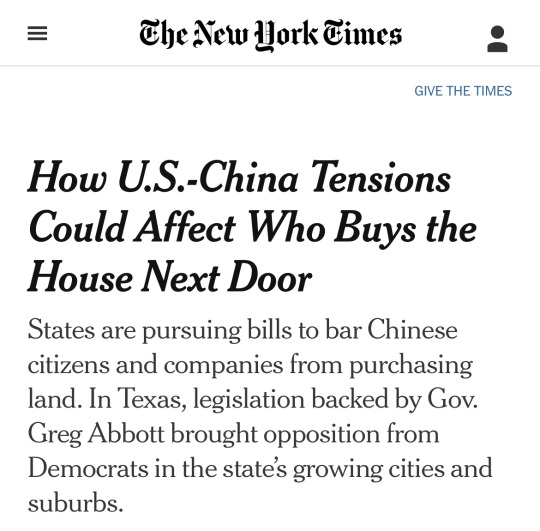
you guys see this shit
#literally doing Chinese exclusion act 2#also can you not buy a house in Oklahoma if you have a visa??????????
0 notes